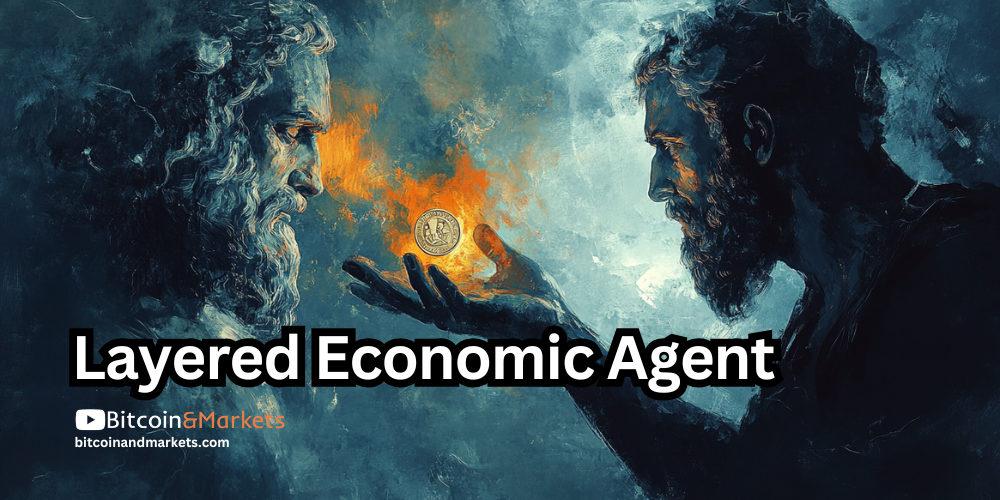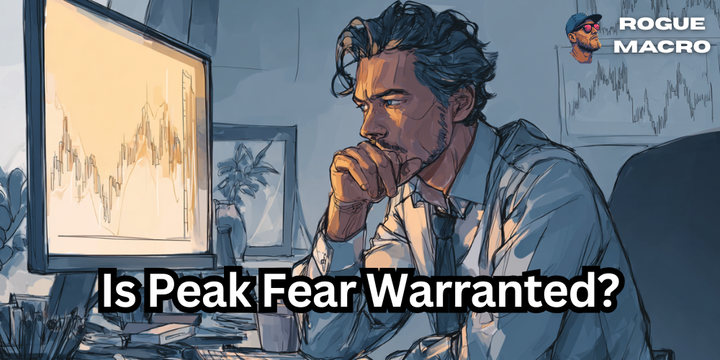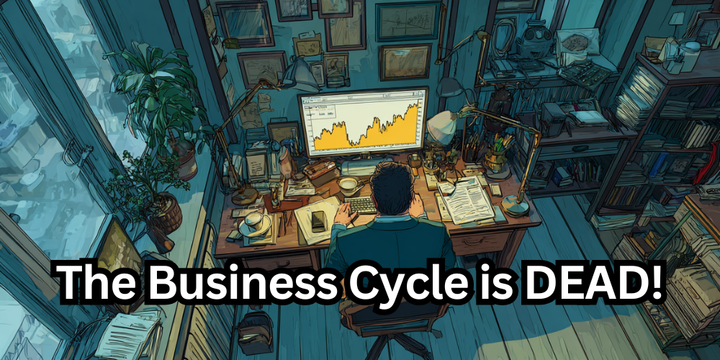In Pursuit Of A New Economics: The Layered Agent
This is a draft of my exploration into the layered economic actor, different from a blank-slate individualistic actor.

Pro #77 | May 21, 2025 | Block 897,739

Hello readers,
At this time, markets have not changed enough to justify a lengthy macro post. Perhaps they will by tomorrow, so stay tuned. I will be sending out a bitcoin post on Friday.
In the meantime, I want to share part of my essay on Evolutionary Monetary Theory. I've been working on it off and on for months and think I have a good foundation here. The final product will be essay length of about 5,000 words, but this section is just the intro to the idea of the Layered Agent or actor in the economic theory.
Other core principles I address are Environmental Evolution in EMT and Monetary Evolution.
Feedback is welcome. Thank you.
Core Principles of EMT
Layered Agent
EMT rests on a layered ontology of human action, where purposeful behavior emerges from the convergence of cognitive processes, biological imperatives, subconscious drives, cultural norms, and environmental realities. Unlike Austrian Economics, which rationalizes multiple inputs as individual preferences formed by a sovereign cognitive actor, EMT treats the economic actor from the ground up as a multilayered agent, with different layers having different aims. For example, an action may occur, not because it is in the selfish best interest of the individual, but because the action benefits the survival of the culture, even to the ultimate cost of the death to the individual. The same can be said for collective psychosis. An action may occur that keeps the individual from thriving, spiraling them into an excruciating depression, but that is the effect of the psychosis, not a self-interested individual. Importantly, this add predictability to economic outcomes.
EMT, however, is not a deterministic theory of human behavior. Individual actions are the result of a cognitive mind, culture, collective psychosis, biology, and environment. You can sum these up as a conscious and subconscious.
- Cognitive mind – conscious reasoning and reflection
- Culture – Inherited norms and shared conscious and subconscious beliefs shaping perception and behavior. These are beliefs about the good life, not specific facts.
- Collective psychosis – False beliefs contradicted by empirical reality, inspiring extreme or irrational behavior and actions.
- Biology – instincts, drives, evolved behavior patterns.
- Environment - hot or cold, wet or dry, delta or desert, plains or mountains, etc.
Subjective value drives individual action but arises from layered aims. We know this because we can isolate them. For example, humans will have similar valuations or preferences under similar circumstances. Austrians claim rational individuals respond similarly to shared conditions, but this implies partial dependence on those conditions, challenging blank-slate individualism. Individuals from the same culture, class, religion, or city are free to differ but likely align in preferences to a very high degree.
Cognitive science supports this layered model, showing individuals integrate biological instincts, subconscious biases, cultural norms, and environmental cues, rather than operating as a fully independent entity. Studies in cognition (Kahneman, 2011), neuroscience (Damasio, 1994), and social psychology (Fiske & Taylor, 2013) show reasoning emerges from instincts, biases, norms, and contexts, supporting EMT’s view of individuals are a collection of more foundational independent variables.
Similar to how an ant’s behavior is inseparable from its colony, human action stems from layered context, as well. Again, this is not deterministic, you are adding context to an infinite number of possibilities, but it is informative for economic predictions. One can consciously choose to act outside their better judgement, but probabilistically, very few will; not enough to change even a near-term market outcome, let alone a long-term outcome for a culture, people or economy.
Austrian Economics’ blank slate cognitive actor struggles to explain real-world phenomena of shared valuation in a predictable model. In The Fatal Conceit (1988), Friedrich Hayek began integrating cultural evolution with individual economic actors by arguing that cultural norms, traditions, and institutions evolve spontaneously through a process akin to group selection, yet individuals remain the primary actors. He unfortunately did not make more progress down this line of inquiry, but he definitely thought of culture as a subject upon which evolution acted separate from the individual. The individual might be considered part of the phenotype of a cultural entity.
Have a great day!
HODL strong. Thanks for being members!
A
- Podcast links and Socials
- Disclaimer
- Feedback form
- Original charts and analysis are CC-BY
* Since last Pro post




